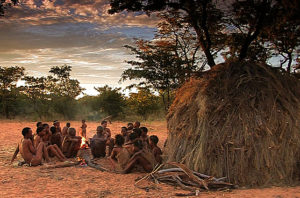The Ju/’hoansi people founded their Living Museum of the Ju/’hoansi San near Tsumkwe, Namibia, several years ago in order to help preserve and showcase for visitors their values and way of life. According to their website, “the Living Museum is an authentic open-air museum where guests can learn a lot about the traditional culture and the original way of living of the San.”

The Economist, a publication from Namibia, recently published a report about the facility and two other living museums that have been established in that country. The story was about a five-day training session for staff members of the living museums which focused on museum management and marketing.
The participants from the living museums expressed their appreciation for the training, where they learned such skills as marketing their programs on the social media like Facebook and Instagram. They also appreciated learning about the strengths and weaknesses of their efforts so they could figure out ways to improve.
The training was organized by the Museums Association of Namibia as part of their Museums Outreach Programme (MOP). The reporter quoted Tuuda Haitula, an officer of the association, speaking about the purpose of the training program. “Participants were able to give their input and understood the importance of cultural heritage and why it needs to be safeguarded, as well as how they are contributing towards that,” he said. The museums are being encouraged to produce local conservation kits, objects representative of their culture that can be shared widely in Namibia.
Dennis Schroeder, the Director of the Goethe-Institut Nanibia, one of the sponsoring organizations, said that the living museums with their emphasis on cultural heritage give people a strong sense of belonging.
Sinikka Antila, the Ambassador to Namibia from the European Union, also praised the work of the living museums. The MOP effort is an important way of promoting local culture, she asserted. “We would like museums in Namibia to become spaces of cultural valuation that has economic benefit and facilitate social debate instead of static sites to visit,” she asserted.